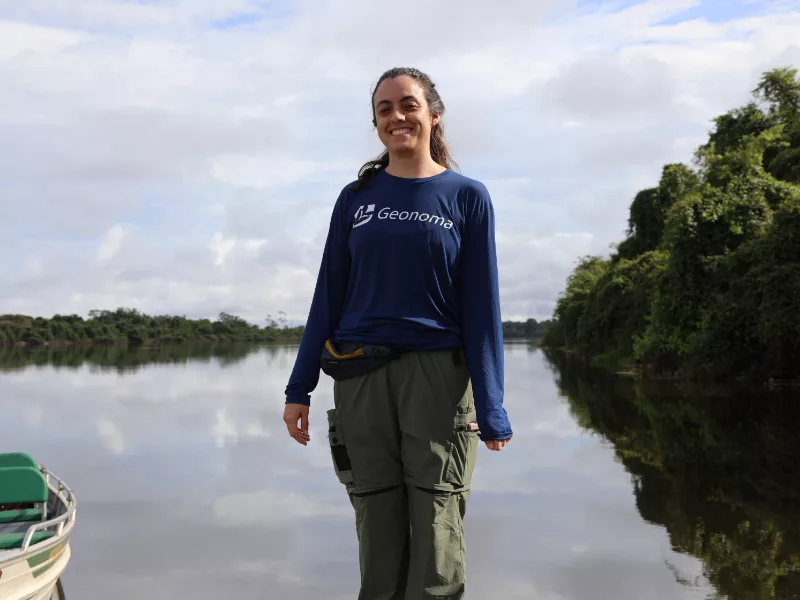Partner Profile
Brian Menell – techmet
TechMet is creating a technology metals champion with strategic control over significant production of the key metals that will define and power the 21st-century global economy.
Location
Ireland
Category
Technology metals
The World Economic Forum predicts in its 2021 report, Fostering Effective Energy Transition, that “[t]he production of minerals such as graphite, lithium and cobalt could increase by nearly 500% by 2050 to meet the growing demand for clean energy technologies.” Electric vehicles, energy storage and renewable energy will be the principal drivers of the demand for technology metals such as cobalt (Co), nickel (Ni), lithium (Li), vandium (V), tin (Sn), tungsten (W) as well as rare earth metals. TechMet was founded in 2017 to produce, process, and recycle the technology metals that will accelerate the global transition to clean energy technologies.
Mercuria acquired a significant minority stake in TechMet in April 2021. We interviewed Techmet’s Chairman and Chief Executive Officer (CEO), Brian Menell, to discuss how the company is focused on environmentally and socially responsible mining to produce the specialty metals and chemicals essential for electrification.
Brian also explains how recycling batteries is critical to capturing the increasing volume of metals stored in existing applications. The interview begins with his perspective on why higher standards of social and environmental performance have become the norm and why this will encourage others in the mining and metals industry to follow suit.
Can you explain why higher environmental and social standards are essential to produce the volumes of technology metals needed for the clean energy transition?
Higher ESG compliance and lower carbon footprints are priorities not only because everyone would like to operate in a sustainable, responsible, and ethical way, but because it is key to how our industry needs to transform itself. And our industry being the metals and mining industry, as you alluded to, clearly needs to radically transform itself in terms of scale. The industry needs to produce many, many multiples of present global production of lithium, cobalt, nickel, and rare earth metals to feed the demand driven by the energy transition. In order to do that responsibly, we need to radically transform ourselves in terms of the reality and the perception of ESG compliance.
In terms of the reality, to be a responsible contributor to an electric vehicle (EV) revolution and to an energy transition more broadly, one has to feed products into the technologies that facilitate this transformation in a way that the retail-facing element of the transition can be comfortable that there is an auditable, transparent, and independently verified change of custody through the pipeline. It also requires a low carbon footprint that inputs into their own low carbon retail products. Increasingly companies like BMW, GM and Tesla require it. Therefore, if you produce it with high standards then you will have preferential access to markets and ultimately preferential pricing. It is a value driver of our business to feed into the requirements of this massive global transformation in terms of how we produce and use energy and mobility.
The other major driver of why our industry needs to transform itself from an ESG and carbon footprint compliance point of view is that the fact we are not going to be able to achieve the scaling of our industry without a lot more money and investment that is presently being applied. And part of where that funding and investment needs to come from in order for us to triple, quadruple, or times ten the scale of what we produce and process is from sources of funding that are ESG, impact investing and climate change oriented. This is where perception matters. At the moment, they do not look at the mining and metals industry because the assumption is that mining and metals are fundamentally negative from an environmental impact point of view and from a responsible governance and community and political interface point of view. And it is up to us, as Techmet, and others like us in our industry to prove that is not the case. Mining can be low impact and responsible environmentally. And mining can be low impact, in terms of carbon footprint, and can obviously be well governed and ethical at the same time.
On all of these fronts, the industry has to transform itself. Techmet seeks to be at the forefront of the industry in terms of how we apply those standards to our projects and investments in order to be part of that transformation: volume-wise, ESG and carbon footprint wise. The situation has changed dramatically over the last few months in terms of security of supply chains, particularly of critical minerals which is where we sit but also in the standards, in the governance and in the source of financing that underpins the scaling of production. It is a very unique moment in history for the world in terms of energy and for our industry in terms of what is required in order to build the technologies and components that will enable that transformation.
For Techmet to accomplish these goals, who are the other stakeholders, and what can they do, to help the industry scale in the right way as you just described?
The primary drivers are availability of funding and the cost of capital – and therefore the banks and investment institutions have to apply their minds on how to assess and to understand the mining and metals industry in order to know what is compliant and what is not compliant in terms of their standards, and hence what should be funded and supported versus a kind of blanket disinterest in the industry’s elements of the energy transition, which is the largely the case today. The banks and investment institution who want to engage in impact investing, ESG, climate change — which represents hundreds of billions of dollars — generally do not want to look at mining and metals because either it does not “tick the boxes” or they are not comfortable with how to assess compliance. This clearly has to change but that requires a great deal of time, attention, and effort on their part but also on our part in order to adhere to standards which are uniform, well-defined, and independently verified. This is missing from the industry today as standards are disparate, uncoordinated and there are lot of different standards which are overlapping, and in some cases, contradictory. We have to do a better job in terms of compliance, traceability, and standards but the financial industry also has to do more to engage with the mining and metals industry to understand it.
Government also has a major role wherever we build production, processing, or recycling facilities. By the way, recycling has a major role in Techmet’s mission for technology metals. The other element of the equation is that any production or processing facility requires government signoffs, government granted rights, government regulatory compliance as well as environmental impact and social impact approvals. Governments, be they in the United States, where we have many projects, or elsewhere in the world, need to do a lot better at streamlining their processes of approvals and for support. This is critical in order to facilitate the right types of fundable projects getting built timeously. Funders, implementers and regulators are the key stakeholders that could do better to aid companies like ours to accelerate this transition. Interestingly the issues are not with the end-users; the Tesla’s of this world will definitely buy from us if we produce more sustainably and responsibly.
Based on your experience, what do you see as the qualities of a good government partner?
There are some obvious ones like transparency and the absence of corruption and therefore you have a level playing field and you know what the rules are. These are prerequisites in having confidence in an environment that justifies investment wherever you are in the world. The key differentiators beyond those basics that would make an environment or a country, more rather than less investable, is access to decision-makers to deal with problems that arise in complicated project. And in some cases, these projects are also in complicated environments. Natural resources and the granting of rights to exploit them have a political dimension as well. Problems therefore can be historical, financial, operational, security related or community oriented and so you need to be able to engage with policymakers to solve them. But in some countries, this can take months as its extremely difficult to engage decisionmakers to build a long-term partnership on common interests.
And this element of partnership is the differentiator as we want to invest for the long-term and want to do things correctly in order to build common interests with respect to community development, ecological issues, as well as employment. After all, we are creating economic activities that benefit the country as a whole as we are producing inputs that benefit the world as a whole in terms of batteries, electric vehicles and renewable energy systems. You need to be able to deal with problems and to deal with problems you need relationships and alignment of interests.
Yet partnering with governments can also be a major source of reputational risk for the mining and metals industry. How do you manage these risks?
First, we have stayed clear of high-risk jurisdictions since Techmet was created in 2017. Therefore, we have chosen not to pursue opportunities available to us in places like the Congo, Zimbabwe, and some other countries where it is much more difficult to ensure ESG standards. The countries we operate in are ones that we are confident we can operate with proper governance and are not tarnished in any way by practices that are inappropriate. Most of our value is created in projects in North America and Europe in this regard. However, let’s take the case of Brazil where we are building our presence. Brazil has its historical issues and is a complicated place, but it is a pretty well-defined mining and metals jurisdiction from a regulatory point of view. And so, we don’t have to engage in any practices that are unacceptable. Our only substantial presence in Africa today is in Rwanda. And again, Rwanda is a complicated place due to its political history but from a mining investor’s point of view it is well governed, focused, and transparent.
The picture is pretty clear with respect to the scale needed to match the future demand for technology metals. Can you elaborate more on your earlier point about the growing importance of recycling and reusing these metals?
Our sole focus is the recycling of lithium-ion batteries and so we do not recycle plastic or aluminum for example. Lithium-ion batteries are the primary power source for electric vehicles and will continue to be in one form or another for many years to come. Therefore, the increased manufacturing capacity, and hence the deployment, of lithium-ion batteries is exponential. That means there are lot more lithium-ion batteries out there that will reach they end of their life or will do so in the next seven or eight years. Currently lithium ion battery manufacturing is doubling roughly every six months with billions of dollars capital committed to increasing capacity in the next two to three years for all the automakers and their battery manufacturers.
Most of the growth and capacity remains in China which dominates the production, components, and supply chain. The pressing and growing need for a viable lithium-ion recycling eco-system is increasing by the day. First because lithium-ion batteries are highly problematic environmentally; damaged, defective manufacturing waste cannot be dumped or burned. Therefore, you have to recycle them from the point of view of environmental responsibility. Second, these metals (nickel, cobalt, lithium) have considerable residual value. Recycling them correctly in a proper ecosystem reduces their costs by bringing value back into the supply pipeline. New batteries then become cheaper as they have a residual value and that is good for the energy transition: it creates more demand for electric vehicles which means less greenhouse gases. The third issue is that these metals are in structural short supply and therefore we need to return them to the manufacturing pipeline through recycling. This also balances the control of the supply pipeline of these critical minerals.
For example, China’s investment over the past fifteen years has enabled it to control sixty-five to ninety five percent of the global supply pipeline of all of these metals. Moreover, lithium-ion batteries are not easy to recycle; they are not like lead acid batteries that you could recycle in your garage. It is complicated because they have a combustible, liquid electrolyte that burns or blows up when you damage or shred it. Most of the value is the active material in the black cathode which is encased in resins and adhesives which have to be removed. It is challenging work which is why Techmet is the primary investor in a publicly listed company called Li-Cycle (LICY: NYSE) which is now the largest lithium-ion battery recycling company in North America. We are also investing in a new recycling technology company in Texas called Momentum, which has patented a membrane solvent extraction (MSX) process to extract high purity metals from cell phones, hard drives, and other battery waste. Techmet, from its inception, has focused on building value by investing at least a third in production, a third in processing and a third in recycling and we continue to allocate capital accordingly.
How do you see the market for recycling evolving and what more can be done to scale it?
Firstly, we need to recycle a 100% of lithium-ion batteries and 100% of manufacturing waste and we will get there. In the short term, we need to recycle device batteries from smart phones, laptops and home appliances: this is very important but will become less so after the EV ecosystem evolves. According to our analysis, if the EV ecosystem is optimally developed over the next ten years, then the recycling of lithium-ion batteries could provide up to 25% of the input of battery metals into the manufacturing of new batteries. It is not the solution, but recycling is a material contributor to the energy transition. Obviously, the cost of recycling is very dependent on the format of the recycled material. If large format lithium-ion batteries for electric vehicles are designed in such a way to make dismantling easy and quick, then recycling will be cheaper and more viable. Design makes a massive difference in the economics of recycling.
My last point is that our relationship to Mercuria is very valuable to us as an investor and shareholder and as a partner in the type of ESG compliant, low carbon supply chain management that we are building together. We are doing this with Mercuria because we have enormous respect and appreciation for their commitment to the energy transition and their commitment to our values.
2024 PARTNER PROFILES
Silvania
Fervo Energy
Ocean Science Expedition
Geonoma
Reporting areas
Governance
Planet
People
Prosperity










